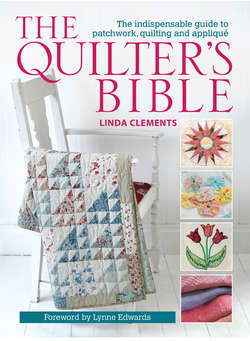Читать книгу The Quilter's Bible - Linda - Страница 62
На сайте Литреса книга снята с продажи.
ОглавлениеTypes of Quilt
Quilts are often given different names to describe their structure or purpose and you may come across some of the following terms in quilting books, magazines and on the internet.
Album Quilts
These quilts are personal creations, made up of blocks with all sorts of images meaningful to the maker, rather like a scrapbook of memories. The blocks may be patchwork, appliqué or a combination and the settings vary with the maker.
This medallion quilt by Petra Prins features a central star panel surrounded by six borders, some plain and some pieced.
Medallion Quilts
These quilts are characterized by a central square or rectangle that forms the focal point of the quilt, with patchwork ‘frames’ added to it and building out from the centre. The quilts are usually highly balanced and symmetrical.
Sampler Quilts
These quilts feature a number of recognizable blocks in a unified design that shows the skill of the maker in coping with different techniques. (see Sampler Quilts.)
Scrap Quilts
These quilts are literally made up of scraps of fabric, pieced together in any design. Because they use fabrics already to hand they usually have a colourful quality. (see Scrap Quilts.)
Charm Quilts
These are quilts where each piece of fabric used is different – in the past the aim was to use 1,000! Charm quilts often use the same shape throughout, commonly a square, rectangle or triangle. Many fabric manufacturers today supply ranges of fabric cut as ‘charm squares’, usually 5in (12.7cm) square. People often use the internet to find like-minded quilters to swap fabrics with.
Friendship Quilts
Friendship quilts developed in America from around 1840 onwards as people moved and settled westwards. Quilts were given to family or friends to show love and affection. They often use fabrics given by loved ones and are usually signed by the maker.
Round Robin Quilts
These are fun quilts made by whole groups of quilters and are often medallion types. Everyone in the group makes a quilt centre and this is passed along to another person in the group who adds a border. It is passed on again to another quilter who adds the second border and so on. Eventually the quilt is returned to the originator, who can see how it has developed.
